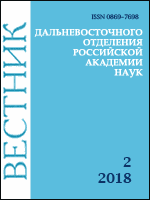Paleomorphic features in meadow solodized soils on the Far East flatlands.
Keywords:
meadow solodized soils (Meadows solodic), processes of salinization and solodization, hydrogen accumulation, partluvation, carbonate concretions, “siliceous” powder, biochambers, relict signsAbstract
The genesis of meadow residual solodized (carbonate) soils in the Far Eastern flatlands is still debatable. At present, the idea of the relictness of the solodization process is prevailing, due to the complex evolution of landscapes in the Pleistocene. To verify this, we used data on the micromorphological structure of carbonate concretions and the physicochemical properties of siliceous formations. Various types (crusts, dusting powder – “siliceous powder” and whitish finely dispersed mass of biochamber) are considered. The genesis of the formation of siliceous material and carbonate concretions is revealed. Data on the lithogenic nature of concretions have been obtained. Siliceous formations were formed during all stages of the soil cover development. It is shown that the processes of their hydrogen accumulation and partluvation are typical for modern soils. The hypothesis of relict solodization in soils on the flatlands of the Far East is not supported by the data obtained.


